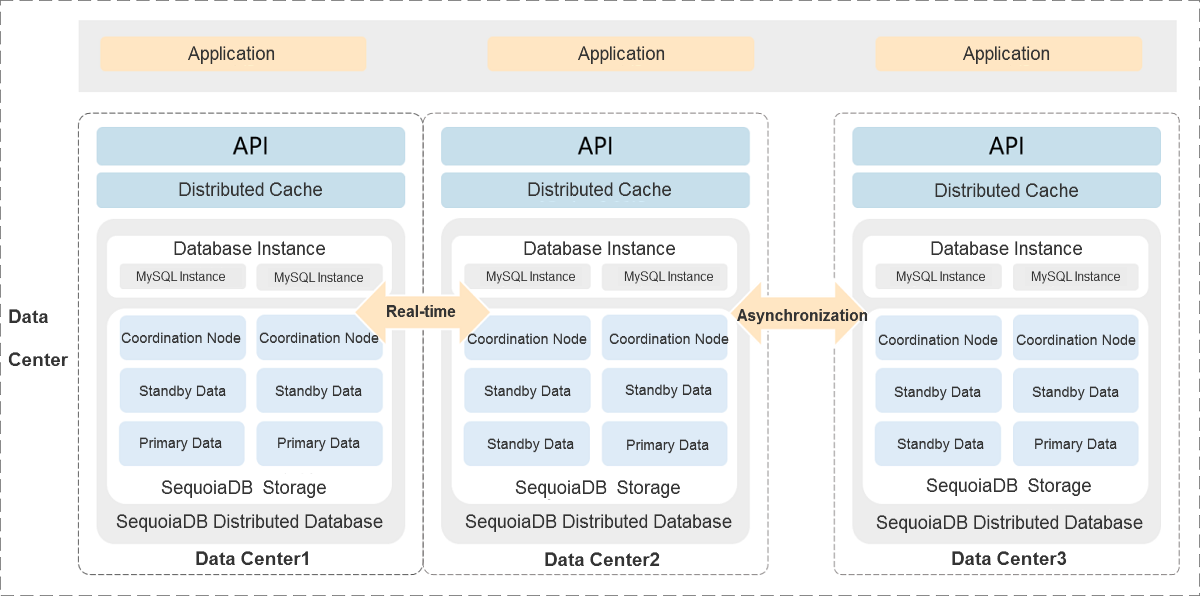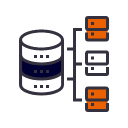Online Transaction Business
SequoiaDB supports MySQL protocol-level compatibility and distributed transactions. It natively supports cluster scalability and can flexibly adjust data consistency with distributed architecture. SequoiaDB is a good choice for users to provide distributed online transaction services.
In recent years, with the continuous development of IT technology, the enterprise IT system foundation has gradually transformed to cloudfication, and the application service has also shifted from a centralized system to a micro-service architecture. The traditional solution of having a single application/platform corresponding to a single database is no longer applicable.
At the same time, the enterprise service channel has also changed from a single channel to coexisting channels with traditional channel, Internet channel and smart terminal channel. The maximum data capacity, concurrent support capability and supported data type diversity that traditional relational databases can provide are making it challenging to meet business demands, which seriously restricts enterprises' desire to improve customer service experience through system upgrades and enhance differentiated competitive advantages of enterprises
Cloudification and micro-service transformation is difficult
In traditional database, the kernel design is based on high-end servers, and the functional design is oriented to the traditional centralized development mode. Therefore, it is difficult to adapt to the cloud-based infrastructure platform, and is not suitable for the flexible micro-service development model.
Limited database accessibility
As enterprise businesses are continuous growing , concurrent access to databases is increasingly demanding, while traditional databases cannot scale horizontally. It results in extremely limited concurrent access capabilities.
A surge in data volume
Traditionally, database expansion, including performance expansion and capacity expansion, can only be achieved by vertical scale up solution. But as Moore's Law fails, the scale up solution is no longer suitable. At the same time, the trend of providing flexible database services on the cloud to satisfy rapid growing business requires on-demand scalability to the underlying database.
High cost of use and operation and maintenance
With traditional database technology, the expensive cost of hardware infrastructure and software licensing has become a huge bottleneck in an enterprise’s IT development. In the big data environment, solutions such as sub-segmentation and table-sharing greatly increase the difficulty of operation and maintenance of the system, which is not conducive to larger-scale use.
At present, data services are transforming to micro-service architectures. Therefore, “resource pooling” of databases has become the core requirement for the development of distributed databases. The distributed online transaction scenario is also undergoing architectural transformation and upgrading around this direction. Nowadays, applications are transforming from traditional “chimney” architecture to micro-services, where each micro-service corresponds to a separate database. In this case, the data service resource pool must have hundreds of thousands of different requirements from different developers, different teams, different development capabilities, different application types, and different SLA security levels. Therefore, the resource pool must have a series of functions such as elastic expansion, resource isolation, multi-tenant, configurable consistency, multi-model (supporting various SQL protocols), and configurable disaster recovery strategies in the cluster.

The design of SequoiaDB is separation of computing layer and storage layer. The underlying storage of SequoiaDB uses the Raft algorithm to implement data consistency technology in a distributed environment, and combines multiple partitions, transaction isolation and other technologies to provide users with complete distributed transaction functions. The computing layer is the application service access layer of the database and supports multiple resolution protocols, including: MySQL protocol, PostgreSQL protocol, Spark SQL protocol, Hive SQL protocol, S3 protocol, Posix protocol and API protocol. Users can choose to use the appropriate computing layer protocol to complete application service development according to different scenarios.






Distributed Transaction
Full support for ACID, flexible adjustment of table-level data consistency in a distributed environment
Transactions support pessimistic locking, closer to the financial core trading scene
Elastic scalability
On-demand cluster scale up or down
SequoiaDB clusters expand SQL processing and storage by simply adding new nodes
Data isolation
Supports multi-tenant capabilities at the physical server level, and isolates different service from each other
Provides complete user authentication management, and table-level CURD access control
Reduce risk
Achieve 24x7 high availability and disaster recovery strategies to ensure data are always available online
3-DC disaster recovery plan in two cities and data stay safe
Reduce the cost
Reducing hardware and software costs by replacing a minicomputer with a PC server
Docking public private cloud platforms to reduce IT input costs